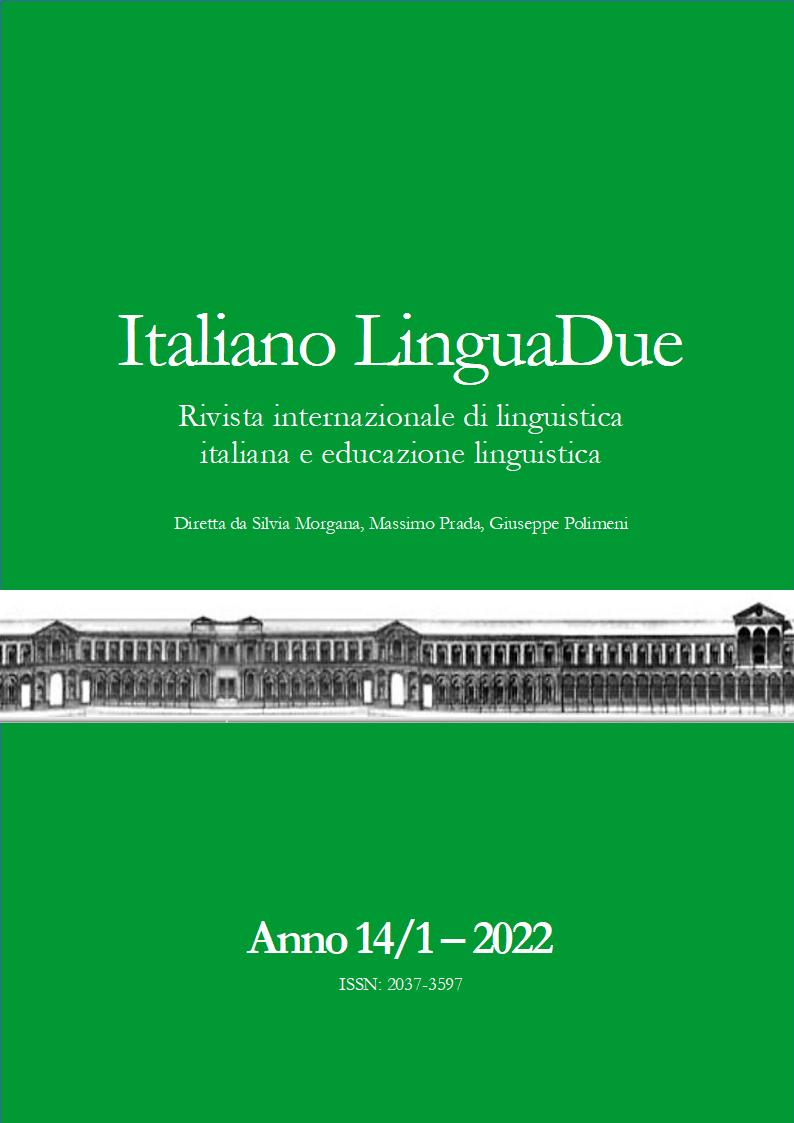LE RELAZIONI DI COMPOSIZIONE TESTUALE
DOI:
https://doi.org/10.54103/2037-3597/18316Abstract
Un testo può venire comunemente inteso come una composizione, il risultato complessivo di una serie di azioni del comporre, in cui ciascun enunciato viene aggiunto a ciò che fino a quel momento forma un oggetto testuale coerente e coeso, più o meno percepito come incompleto. Si dà il nome di relazioni di composizione testuale a un particolare insieme di legami di natura logico-argomentativa che si realizzano inevitabilmente nel momento in cui viene prodotto (oralmente o per iscritto) un nuovo enunciato: il grado zero di tali azioni compositive è costituito dalla relazione di aggiunta, mentre relazioni più ricche saranno quelle di motivazione, consecuzione, esemplificazione, riformulazione, contrasto, concessione, ecc. La definizione in termini qualitativi e quantitativi di tali relazioni non è ancora del tutto chiara, ma il loro contributo alla coerenza di un testo appare di assoluto rilievo. Ci si propone qui di tracciare le proprietà fondamentali di tali relazioni di composizione testuale, cercando di definirne non solo la natura (che dà luogo a qualche proposta di classificazione e articolazione interna), ma anche la ‘sintassi’, ossia le diverse modalità con cui tali relazioni collegano diverse unità del testo, in un complesso intreccio tra contenuti espliciti e impliciti, a contatto o a distanza, tra elementi che costituiscono il fuoco della relazione ed elementi che ne rimangono al margine o ne sono esclusi, tra formato sintattico e natura della relazione, e così via; si accennerà anche alla possibilità per un enunciato di veicolare contemporaneamente più relazioni logiche (eventualmente tra loro funzionalizzate, come nel caso di un esempio che serva da motivazione), e più in generale alle gerarchie informative che ciascuna relazione impone ai contenuti coinvolti. Si fornisce in chiusura un paio di esempi d’analisi che illustrano su frammenti di testi reali la complessa tramatura realizzata dalle relazioni di composizione testuale.
Relationships in text composition
A text can be commonly understood as a composition, the overall result of a series of actions of composing, in which each utterance is added to what up to that point forms a coherent and cohesive textual object, more or less perceived as incomplete. “Textual composition relationships” refer to a particular set of logical-argumentative links that are inevitably realized at the moment a new utterance is produced (orally or in writing): the zero degree of such compositional actions is the relationship of addition, while richer relations will be motivation, consecution, exemplification, reformulation, contrast, concession, etc. The definition in qualitative and quantitative terms of such relationships is not yet entirely clear, but their contribution to the coherence of a text appears to be of absolute importance. We trace the basic properties of these relationships of textual composition, trying to define not only their nature (which gives rise to some proposals for classification and internal articulation), but also their 'syntax,' that is, the different ways in which such relationships connect different units of the text, in a complex interweaving between explicit and implicit content, in contact or at a distance, between elements that constitute the focus of the relationhip and elements that remain on the margin or are excluded from it, between syntactic format and the nature of the relationhip, and so on; mention is also made of the possibility for an utterance to simultaneously convey several logical relationships (possibly functionalized with each other, as in the case of an example serving as a motivation), and more generally of the informational hierarchies that each relationship imposes on the contents involved. In closing, a couple of examples of analysis of fragments of real texts are provided to illustrate the complex framework of textual composition relationships.
Dowloads
Pubblicato
Versioni
- 2022-07-28 (2)
- 2022-07-18 (1)




